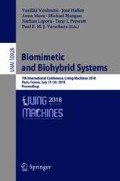Abstract
Passive flight in living things, such as in maple or dandelion seeds, is one of the most primitive methods of aerial dispersal. This mechanism is robust and efficient, as it utilizes the present wind conditions. Passive flight is used not only by plant seeds but also by some animals. Spiders use fine, flexible silk filaments to fly, a behavior known as ballooning. This capability is distinct from that of other winged insects, as some ballooning spiders can travel hundreds of kilometers, reaching as high as 4.5 km above sea level. Various hypotheses explain the physical mechanism of ballooning flight. Some studies have shown that turbulent flow in the atmospheric boundary layer enhances spiders’ flight endurance. This mechanism may be usefully applied in the exploration of hazardous weather conditions, such as severe storms, tornadoes, and clear-air turbulence, in the atmosphere, if we scale them up. In this paper, the authors briefly introduce the flight characteristics of the ballooning structure (i.e., the spider body and silk filaments), which were revealed in a simulation using a bead-spring model, and examine the possibility of scaling up ballooning flight from 25 mg to 1–2.5 kg for the exploration of hazardous weather conditions in the atmosphere.
Access this chapter
Tax calculation will be finalised at checkout
Purchases are for personal use only
References
Pielke, R.A., Gratz, J., Landsea, C.W., Collins, D., Saunders, M.A., Musulin, R.: Normalized hurricane damage in the United States: 1900–2005. Nat. Hazards Rev. 9(1), 29–42 (2008). https://doi.org/10.1061/(asce)1527-6988(2008)9:1(29)
Golding, W.L.: Turbulence and its impact on commercial aviation. J. Aviat./Aerosp. Educ. Res. 11(2), 19–29 (2000)
Collins, J., Flaherty, P.: The NOAA hurricane hunters: a historical and mission perspective. Fla. Geogr. 45, 14–27 (2014)
Lin, P.H., Lee, C.S.: The eyewall-penetration reconnaissance observation of Typhoon Longwang (2005) with unmanned aerial vehicle, aerosonde. J. Atmos. Oceanic Technol. 25(1), 15–25 (2008). https://doi.org/10.1175/2007JTECHA914.1
Pandolfi, C., Izzo, D.: Biomimetics on seed dispersal: survey and insights for space exploration. Bioinspir. Biomim. 8(2), 25003 (2013). https://doi.org/10.1088/1748-3182/8/2/025003
Cho, M.S., Neubauer, P., Fahrenson, C., Rechenberg, I.: An observational study of ballooning in large spiders: nanoscale multifibers enable large spiders’ soaring flight. PLoS bio. 16(6), e2004405 (2018). http://doi.org/10.1371/journal.pbio.2004405
Reynolds, A.M., Bohan, D.A., Bell, J.R.: Ballooning dispersal in arthropod taxa with convergent behaviours: dynamic properties of ballooning silk in turbulent flows. Biol. Lett. 2(3), 371–373 (2006). https://doi.org/10.1098/rsbl.2006.0486
Zhao, L., et al.: Flying spiders: simulating and modeling the dynamics of ballooning. In: Layton, A., Miller, L. (eds.) Women in Mathematical Biology. AWMS, vol. 8, pp. 179–210. Springer, Cham (2017). https://doi.org/10.1007/978-3-319-60304-9_10
Childress, S.: Mechanics of Swimming and Flying (Cambridge Studies in Mathematical Biology, 2). Cambridge University Press, Cambridge (1981). https://doi.org/10.1017/cbo9780511569593
Tritton, D.J.: Experiments on the flow past a circular cylinder at low Reynolds numbers. J. Fluid Mech. 6(4), 547 (1959). https://doi.org/10.1017/S0022112059000829
Gauger, E., Stark, H.: Numerical study of a microscopic artificial swimmer. Phys. Rev. E. Stat. Nonlin. Soft Matter Phys. 74(2 Pt. 1)(2), 21907 (2006)
Acknowledgments
MS.C. was supported by the state of Berlin’s Elsa Neumann Scholarship (T61004) during this study.
Author information
Authors and Affiliations
Corresponding author
Editor information
Editors and Affiliations
Rights and permissions
Copyright information
© 2018 Springer International Publishing AG, part of Springer Nature
About this paper
Cite this paper
Cho, M., Affeld, K., Neubauer, P., Rechenberg, I. (2018). Spiders’ Ballooning Flight as a Model for the Exploration of Hazardous Atmospheric Weather Conditions. In: Vouloutsi , V., et al. Biomimetic and Biohybrid Systems. Living Machines 2018. Lecture Notes in Computer Science(), vol 10928. Springer, Cham. https://doi.org/10.1007/978-3-319-95972-6_12
Download citation
DOI: https://doi.org/10.1007/978-3-319-95972-6_12
Published:
Publisher Name: Springer, Cham
Print ISBN: 978-3-319-95971-9
Online ISBN: 978-3-319-95972-6
eBook Packages: Computer ScienceComputer Science (R0)

